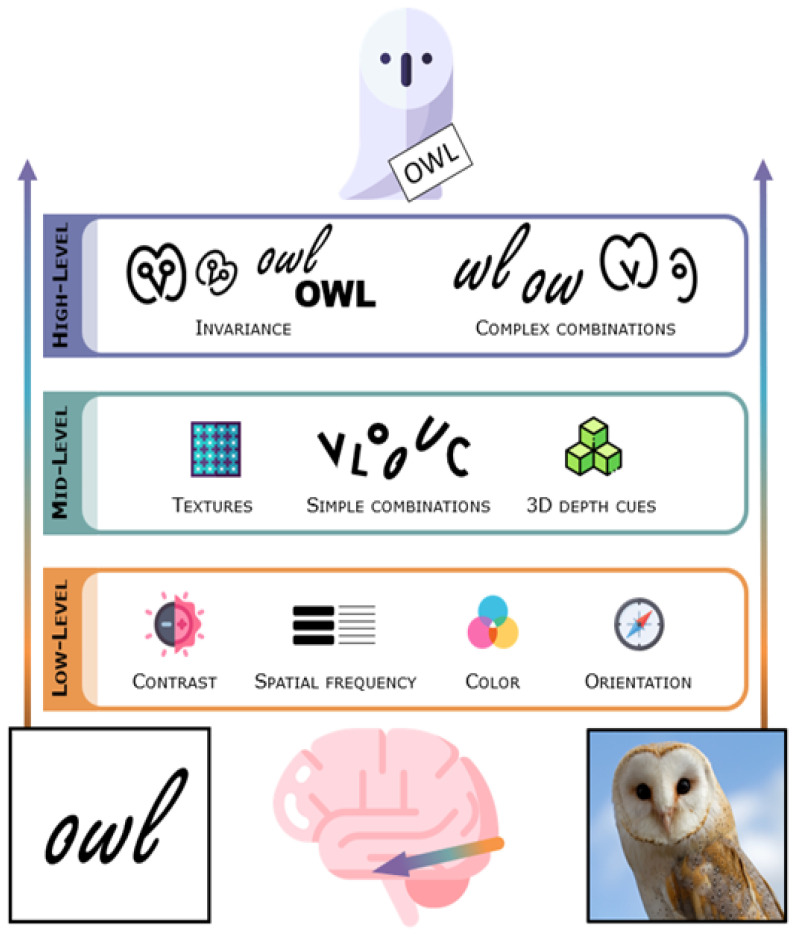Figure 1.
Simplified schematic of the hierarchical view of vision based on studies in humans and animals. Visually presented words are generally believed to go through the entire visual processing hierarchy [46]: low-level (contrast, spatial frequencies, color or orientation), mid-level (simple conjunctions of visual features without necessarily being driven by any of the constituent parts [47]) and high-level (combinations of mid-level features as complex shapes [43] and tolerance or invariance to identity-preserving transformations [41,48,49]). Words likely share low- and mid-level features with various objects. Words and other object classes may, however, recruit specialized high-level visual features as they are not necessarily characteristic of all object types, and this might need to be learned through experience [50]. Figure inspired by figures from Groen et al. [51] and Dehaene et al. [46], icons by the current authors or by Flaticon.com, owl picture by Tony Hisgett, under a CC BY 2.0 license: https://creativecommons.org/licenses/by/2.0/ (accessed on 20 September 2021).

